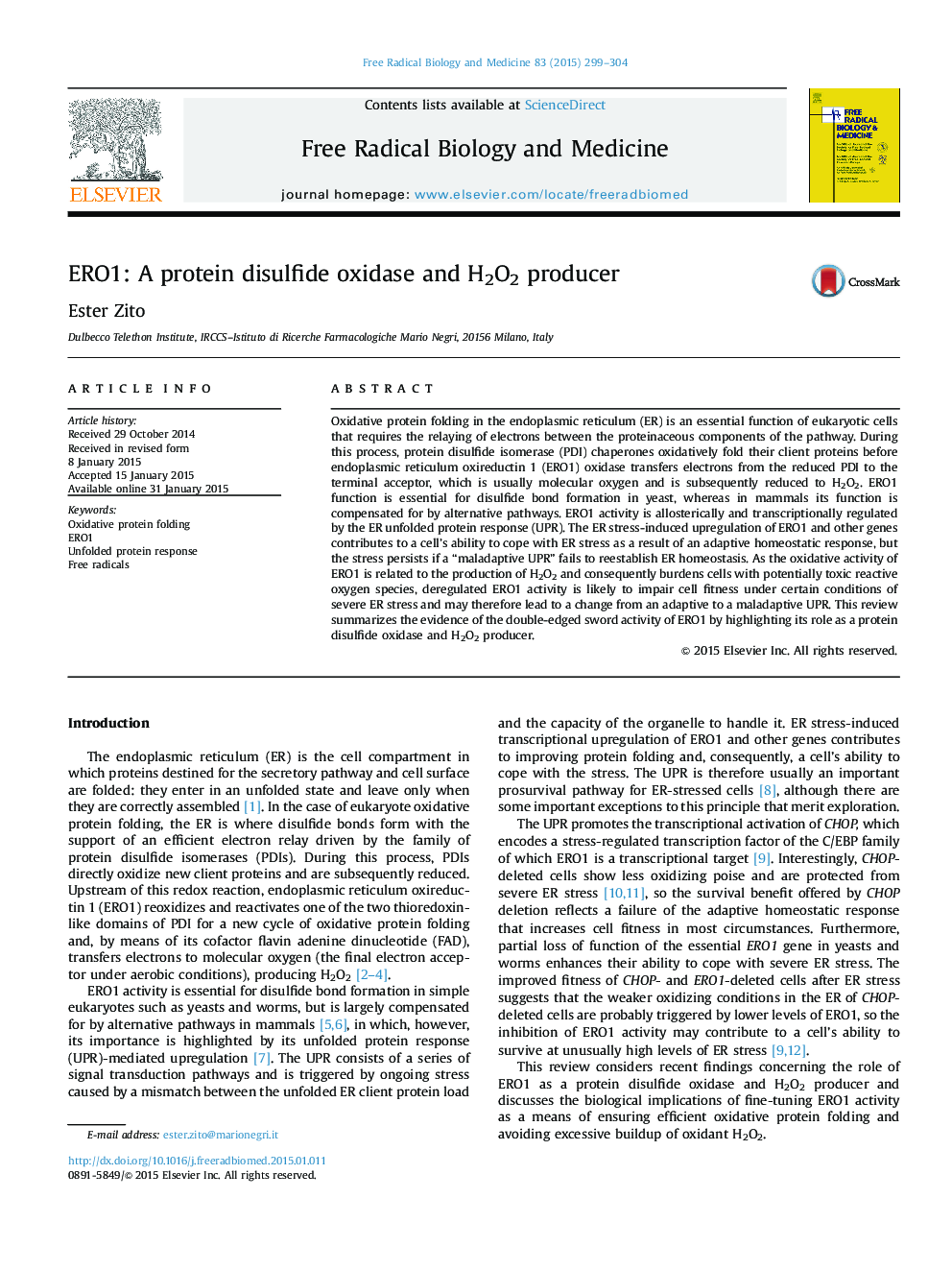| Article ID | Journal | Published Year | Pages | File Type |
|---|---|---|---|---|
| 1907938 | Free Radical Biology and Medicine | 2015 | 6 Pages |
Abstract
Oxidative protein folding in the endoplasmic reticulum (ER) is an essential function of eukaryotic cells that requires the relaying of electrons between the proteinaceous components of the pathway. During this process, protein disulfide isomerase (PDI) chaperones oxidatively fold their client proteins before endoplasmic reticulum oxireductin 1 (ERO1) oxidase transfers electrons from the reduced PDI to the terminal acceptor, which is usually molecular oxygen and is subsequently reduced to H2O2. ERO1 function is essential for disulfide bond formation in yeast, whereas in mammals its function is compensated for by alternative pathways. ERO1 activity is allosterically and transcriptionally regulated by the ER unfolded protein response (UPR). The ER stress-induced upregulation of ERO1 and other genes contributes to a cell's ability to cope with ER stress as a result of an adaptive homeostatic response, but the stress persists if a “maladaptive UPR” fails to reestablish ER homeostasis. As the oxidative activity of ERO1 is related to the production of H2O2 and consequently burdens cells with potentially toxic reactive oxygen species, deregulated ERO1 activity is likely to impair cell fitness under certain conditions of severe ER stress and may therefore lead to a change from an adaptive to a maladaptive UPR. This review summarizes the evidence of the double-edged sword activity of ERO1 by highlighting its role as a protein disulfide oxidase and H2O2 producer.
Related Topics
Life Sciences
Biochemistry, Genetics and Molecular Biology
Ageing
Authors
Ester Zito,
